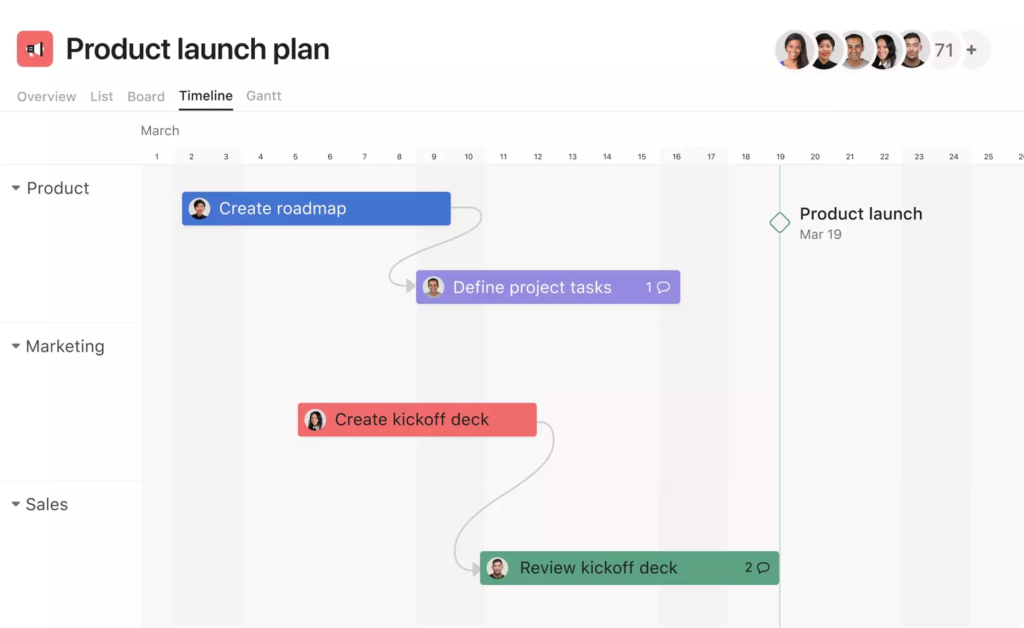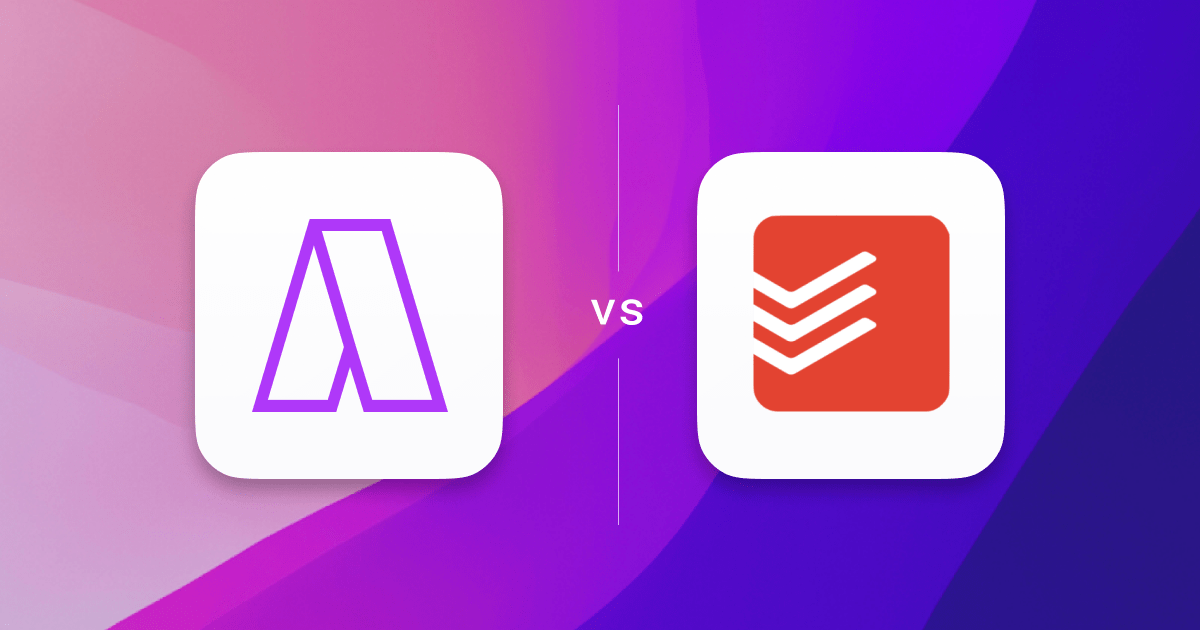What is Things 3
Things 3, a distinguished entrant in the productivity tools arena, is acclaimed for its elegant design and powerful organizational capabilities. It’s a task management app that combines simplicity with a rich set of features, making it a favorite among users who appreciate both aesthetics and functionality. With its intuitive interface, Things 3 allows for effortless management of to-dos, reminders, and projects, all within a visually pleasing environment. The tool stands out for its unique task categorization approach and seamless synchronization across devices, ensuring users can stay organized wherever they go.
Key Features of Things 3
- Task Management: Organize your tasks easily with deadlines, priorities, and reminders.
- Project Organization: Group tasks into projects with subtasks and sections for better management.
- Calendar Integration: See your calendar events alongside your to-dos for effective planning.
- Quick Task Entry: Add tasks quickly while working in other apps, even using Siri for hands-free entry.
- Customizable Tags: Use tags for easy categorization and searching of tasks.
- Cross-Device Syncing: Keep your tasks updated across all your Apple devices with Things Cloud.
What is Asana
Asana stands out as a versatile project management tool, ideal for various team sizes. Its user-friendly interface, coupled with diverse features like task management, project visualization (including Kanban and Gantt charts), and robust team collaboration tools, makes it a top choice. Additionally, Asana’s integration capabilities with other apps enhance workflow efficiency. Offering a range of pricing plans, including a free version for smaller teams, Asana caters to a broad spectrum of organizational needs. It’s particularly recommended for its ease of use, extensive integrations, and comprehensive project management features.

Key Features of Asana
- Task Management: Asana excels in task management, allowing users to create, assign, and track tasks efficiently. This feature ensures that team members are always aware of their responsibilities and deadlines, promoting productivity and accountability.
- Project Visualization: With options like Kanban boards and Gantt charts, Asana offers versatile visualization tools. These features aid in understanding the project flow and milestones, making it easier to manage timelines and resources.
- Team Collaboration: Asana fosters seamless team collaboration. It allows for easy communication within tasks, sharing of files, and updating progress, thus keeping everyone on the same page and enhancing teamwork.
- Integration Capabilities: The platform integrates with a wide range of other applications and tools, streamlining workflows and automating processes. This integration makes it a flexible tool that can adapt to various business ecosystems.
- Customization and Reporting: Asana offers extensive customization options, including custom fields and reporting features. These allow teams to tailor their project management experience and generate insightful reports for better decision-making.
- User-Friendly Interface: The intuitive interface of Asana is designed for ease of use, making it accessible for teams regardless of their technical expertise. This simplicity ensures a smooth onboarding process and enhances overall user experience.
Things 3 vs Asana: Features
| Features | Things 3 | Asana |
|---|---|---|
| Integrations | Zapier, including Slack, Gmail, Trello, Notion, Google Calendar, and Google Tasks | Google Drive, Slack, Zoho Cliq, Zapier, Jira, Zoom, Toggl Track, Loom, Harvest, Gmail |
| Calendar | No built-in calendar | Yes |
| Platforms | Available only on iOS platforms (iPhone, iPad, Apple Watch, and Mac). | macOS, iOS, Android, Web, and Windows |
| Task Management | Offers labels, tags, and recurring tasks | Task creation and assignment, due date setting, progress tracking, project organization, tagging, comments, file attachments, task conversations |
| Natural Language Processing | No | Yes |
| Time Blocking | Not Available | No |
| Analytics | No | Yes |
| Meeting Scheduler | Yes | No |
| Time Zones | No | Yes |
| Reminders | Yes | Yes |
| Customer Support | Good | Average |
| 1:1 User Onboarding | No | Asana offers customer success services including tailored training and consultation, which might include onboarding calls for new users, especially in enterprise plans |
| Pricing | One Time Payment at $50 | Asana offers three plans: the free Personal plan for basic needs, the Starter plan at $11.59 for expanded features like timeline view, and the Advanced plan at $25.69 for comprehensive project management tools including time tracking and advanced customization. |
Things 3 vs Asana: Pricing
Things 3 Pricing
Things 3 requires purchasing separate applications for different Apple devices: $49.99 for macOS, $9.99 for iPhone and Apple Watch, and $19.99 for iPad, totaling around $80 for the full suite.
Asana Pricing
Asana offers three main pricing tiers:
(i) Personal: This is a free plan, suitable for small teams or individuals. It includes basic project and task management features and supports collaboration with up to 10 team members. Users have access to unlimited tasks, projects, messages, and file storage.
(ii) Starter: Priced at $11.59 per user per month, this plan builds on the Personal plan. It allows collaboration with up to 500 teammates and introduces additional features like timeline and Gantt chart views, along with the ability to use forms and automation.
(iii) Advanced: At $25.69 per user per month, the Advanced plan includes all features from the lower tiers and adds functionalities such as goals, time tracking, proofing, approvals, and more advanced customization options.
Each tier offers a range of features to accommodate different needs, from individual use to more complex team collaboration and project management requirements.
Things 3 vs Asana: Reviews
Things 3 Review
Things 3 is acclaimed for its visually appealing design and efficient personal project management tools, appealing to GTD enthusiasts with features like task filtering via tags. However, its high upfront cost for Apple devices and uncertainty about shifting to a subscription model are downsides. Despite its excellent design and one-time purchase model, the lack of collaboration tools, absence of location-based reminders, and incompatibility with non-Apple products are notable limitations. These factors could be crucial in determining whether Things 3 is the right task management tool for individual needs.
Asana Review
Asana, a popular project management tool, is praised for its intuitive interface and robust feature set, making it an excellent choice for teams of all sizes. Key strengths include versatile project views, effective task and assignment management, and smooth team collaboration. Users benefit from a variety of project views like Kanban Board, Timeline, and Gantt, alongside templates for quick project setup. Asana’s progress tracking and integration with various tools like Google Suite and Microsoft 365 further enhance its utility. However, the tool’s complexity might be overwhelming for beginners, and the cost of the Advanced package may be a concern for smaller teams or individual users.
Which One Should You Pick
Consider Things 3 if
- You Appreciate Minimalism in Design: Things 3 might be suitable if you prefer a simple interface, though some users might find it too basic for complex task management.
- You Need Basic Task Organization: It’s good for straightforward task organization but lacks advanced features like detailed time tracking or extensive integrations.
- You Prefer a Non-Overwhelming Approach: Things 3 is a fit if you need a task manager that’s not too complex, though it may not satisfy those needing extensive productivity tools.
Consider Asana if
- You’re Managing Diverse Projects: Asana is suitable for various project types, offering flexibility with multiple view options like Kanban and Gantt charts. However, it might take time to master all the features.
- You Value Integration: Asana’s integration with many tools (like Google Suite, Microsoft 365) enhances its utility. But, be mindful that depending on external apps could complicate workflows.
- You Prioritize Team Collaboration: Asana is strong in team collaboration features, making it easy to track responsibilities and updates. Still, for very small teams or individual use, the platform might offer more than needed.
Best Things 3 and Asana Alternatives
- Akiflow: Akiflow is a time management app offering time blocking, task scheduling, and integrations with various tools. It focuses on productivity and organization through a unified task and appointment interface.
Akiflow Price: $19 per month, paid annually - TickTick: TickTick is an all-in-one task management and reminder app, offering features like task organization, habit tracking, and calendar views. It’s designed for personal and work use, facilitating productivity with its user-friendly interface and cross-platform compatibility. TickTick also includes collaboration tools for team projects.
TickTick Price: $3 per month, paid annually - Todoist: Todoist is a task management tool. It enables users to manage tasks, set priorities, and track deadlines across various devices. Its features include task categorization, reminders, and project collaboration, making it suitable for both personal and team productivity.
Todoist Price: Premium at $4 per month, paid annually



